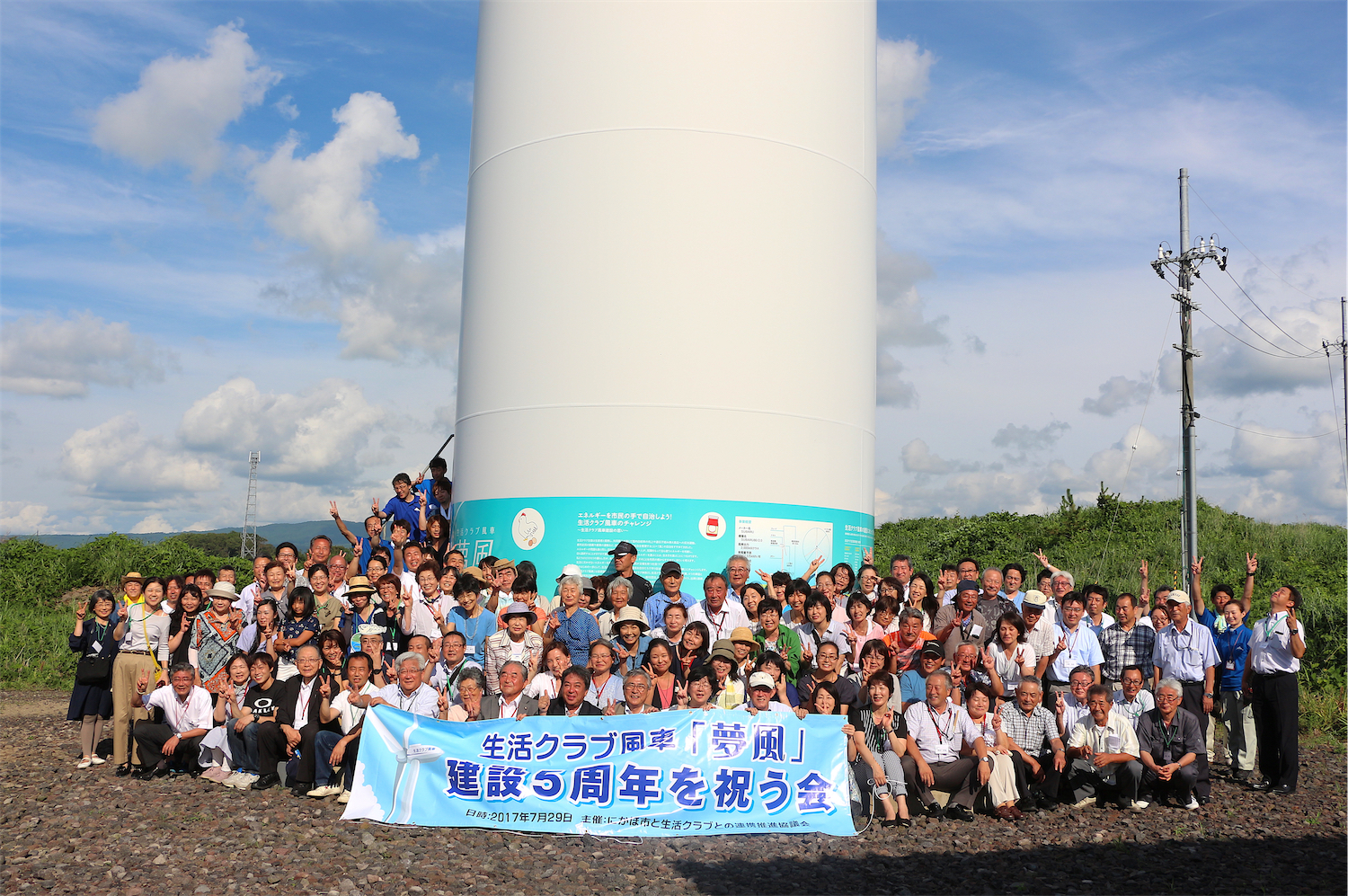In the 2010s, many renewable energy projects were launched across Japan in the wake of the Fukushima nuclear disaster. This article focuses on a revolutionary community-driven project in Odawara City, as well as an inter-regional collaborative project in Nikaho City.
Toward the Development of Community-driven Projects
The community power project in Odawara City, Kanagawa Prefecture, was triggered by the 2011 Tōhoku earthquake and the Fukushima accident, which led to a drastic decrease in tourists. Mayor Kato visited the Institute for Sustainable Energy Policies and decided to promote the community power project. In the summer of the same year, Odawara received support from the Ministry of the Environment, and the government, private sector, and experts worked together on this project.
In December 2012, 24 (and later 38) companies in Odawara co-founded the Houtoku Energy Co., Ltd. Houtoku Energy’s first opportunity was a mega-solar power project on the roofs of public facilities, which succeeded with local cooperation and citizen funding. After that, the second phase of the mega-solar business was promoted, but a major turning point for the company was its entry into the electric power retail business.

Fig.1. Solar power generation at Chiyo Elementary School, a model project | Source: Houtoku Energy Corporation
Shonan Electric Power Co., Ltd, centered in Hiratsuka, also in Kanagawa Prefecture, is a new regional power company established in 2014. With the professional soccer team Shonan Bellmare as a partner, the company returns a portion of its profits to sports activities, and in May 2017, local companies in Odawara, including Houtoku Energy, acquired a majority stake in Shonan Electric Power, making it possible for Houtoku Energy to combine power generation and retail business.
In July 2017, Houtoku Energy, Shonan Electric Power, and other companies signed an agreement with Odawara on a model project to promote local self-sufficiency in energy. The project involves installing solar power generation and storage batteries in seven municipal elementary schools to enable private consumption and efficient energy management in the community (Fig. 1). Shonan Electric Power also took over the electricity supply to 42 facilities (e.g., kindergartens), and plans are being made to give priority to natural energy in Odawara City and Kanagawa Prefecture.
In the case of Odawara, it is interesting to note the transition from administrative to private sector leadership and the development of the solar power generation business into a new electric power retail business. The city took the lead in starting off the initial discussion, as well as enacted an ordinance on promoting renewable energy in 2014, and developed a unique evaluation system to assess the regional characteristics of public facilities for roof rental. Later, Odawara was selected as an “SDG City of the Future” by the Cabinet Office, and has positioned local energy self-sufficiency as an important target.

Fig.2. Celebrating the 5th anniversary in front of Yumekaze | Source: Seikatsu Club Kanagawa
A Model of Urban-regional Collaboration
Renewable energy projects which contribute to the community do not necessarily have to be locally driven. The case of Nikaho City in Akita Prefecture can be called “interregional cooperation that starts with energy.”
In March 2012, a 1990kW wind turbine called Yume-Kaze in Nikaho was built by the Seikatsu Club, a Japanese federation of consumer co-operatives. In order to promote energy initiatives, the Seikatsu Club, which has traditionally focused on food and welfare, also aimed to contribute to the local community by building environmentally-friendly natural energy power plants and encouraging the selective use of electricity. Since a favorable site for wind power generation was available in Nikaho, specific studies were carried out, and the wind power generation facility was installed with the endorsement of the community. The name “Yume-Kaze” was chosen from the ideas of local elementary school children (Fig. 2).
The Seikatsu Club later established an electricity retail company, Seikatsu Club Energy Co., Ltd., to provide its members with electricity generated mainly from natural energy sources, including Yumekaze. The Seikatsu Club and local processing manufacturers have also worked together to develop products that use local agricultural products in an effort to extend the energy connection to the food industry. The sales of these products are now worth tens of millions of yen per year.
Since then, the city of Nikaho and the Seikatsu Club have been cooperating with each other to revitalize the region based on the “Regulation on Fund for Development of Communities by Natural Energy” and other regulations. In addition, Nikaho has been designated by the Ministry of the Environment as a location for a zoning project, and the city has been investigating suitable locations and restricted areas for wind power generation.
Nikaho’s experience provides a model for how cities and regions can work together in the wake of a wind power project to advance the government’s energy policy, and also contribute to the revitalization of the region, such as food connections within the private sector.
Connecting Energy to Regional Change
In the above cases, again, the private sector plays the main role in the community’s energy projects, and local governments are creating mechanisms to support the projects at different stages. In addition, the government is also responsible for bringing together the people involved and making various preparations to remove barriers to the project.
Since the implementation of the FIT system in 2012, there has been a small increase in externally-driven projects in regions due to property tax cuts, with some in the name of “community contribution activities.” There has also been a lot of temporary planning and equipment installation which are merely aimed at subsidies. Hence, supporting the launch of community power projects and guiding them to enhance the ripple effect of interregional cooperation is a time-consuming and difficult task for local governments. However, whether or not these small energy initiatives will later generate far-reaching changes that are beyond energy depends on the constant and steady effort of local governments.
—
Text: Noriaki Yamashita (Institute for Sustainable Energy Policies)
オリジナル掲載:『地球温暖化』「地域から始めるエネルギー転換 − 自治体の政策と役割」(2020年1月).





